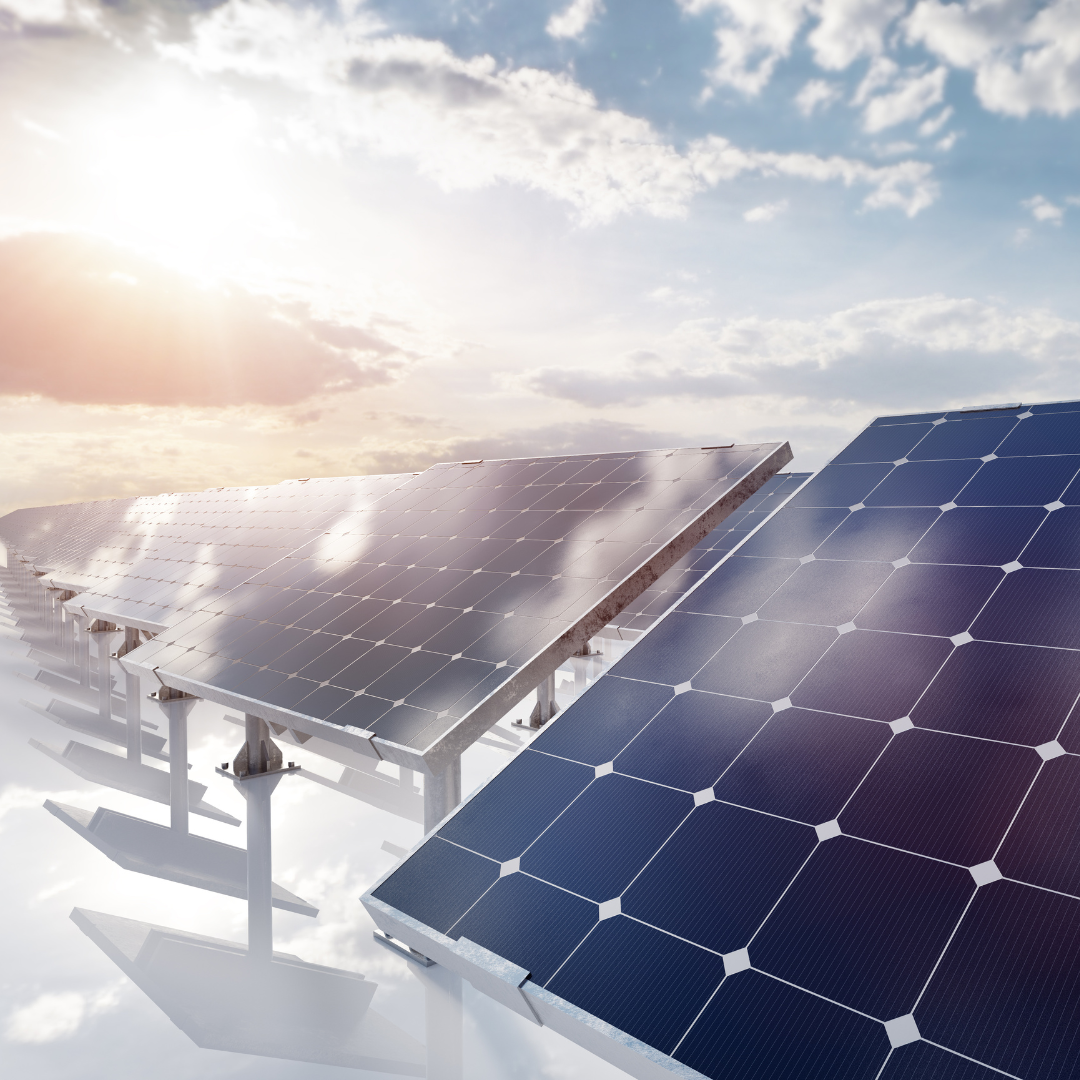Off-Grid Heating: Preparing for Fall and Cutting Costs
As the golden hues of summer begin to fade and the air turns crisp, the approach of fall is palpable. For many, this means cozy nights, pumpkin-spiced treats, and the rustling sound of leaves underfoot. However, fall also heralds the beginning of the colder months, making it imperative to ensure our homes remain warm and inviting. The significance of preparing for these colder seasons can't be understated, especially as they often bring with them not just chilly winds but also rising energy bills.
The traditional heating methods many of us have grown accustomed to are not only becoming increasingly expensive but are also often detrimental to our environment. With the continuous rise in energy costs, there's a pressing need to explore more sustainable and cost-effective ways to heat our homes. Off-grid heating systems, once considered a niche or luxury, have now emerged as a viable and eco-friendly alternative. They offer a beacon of hope in a world striving for greener solutions, allowing homeowners to cut costs while also reducing their carbon footprint.
As we stand on the cusp of another fall, it's time to take stock of our heating sources and costs. Let's delve deeper into how off-grid heating can serve as the perfect supplement, or even replacement, to our current systems, ensuring a warm home and a greener planet.

Understanding Off-Grid Heating
What is Off-Grid Heating?
In the simplest terms, off-grid heating refers to any heating method that doesn't rely on mainstream, centralized energy sources, such as electricity from the grid or natural gas pipelines. Instead, these systems harness alternative, independent sources of energy to produce warmth, often tapping into renewable resources or localized fuels.
The significance of off-grid heating has grown exponentially in today's environment. With increasing concerns over climate change, energy security, and skyrocketing utility costs, many homeowners and businesses are looking towards decentralized solutions that give them more control over their energy consumption. Off-grid systems are not just about being disconnected from the grid; they symbolize a shift towards a self-sufficient, sustainable, and resilient way of living.
Why Consider Off-Grid Heating?
- Environmental Impact: Traditional heating methods, especially those relying on fossil fuels, contribute substantially to greenhouse gas emissions. Off-grid heating options, particularly those harnessing renewable resources, drastically reduce one's carbon footprint, helping combat climate change.
- Sustainability: Renewable off-grid heating methods, such as solar or biomass, utilize resources that are inexhaustible. This means that even as fossil fuel reserves deplete, homes equipped with sustainable heating won't be left in the cold.
- Cost Savings: While the initial investment for some off-grid heating systems can be substantial, the long-term savings are considerable. Without monthly utility bills or the unpredictability of energy price hikes, homeowners can often recoup their investment in a few years and then enjoy significantly reduced heating costs.
Types of Off-Grid Heating Sources
The vast world of off-grid heating boasts a variety of sources, each with its own advantages:
- Solar Heating: Utilizes solar panels to absorb sunlight and convert it into heat. This method is clean, renewable, and incredibly effective in areas that receive ample sunlight, even in colder seasons.
- Wood Stoves: A timeless method, wood-burning stoves use logs as fuel. Modern designs are highly efficient and produce a lot of heat with minimal smoke and ash.
- Propane Heaters: These are standalone systems that burn propane gas to produce heat. They're versatile, portable, and don't require electricity, making them ideal for remote locations.
- Biomass Boilers: These systems burn organic materials, like wood pellets or agricultural waste, to produce heat. They're sustainable, efficient, and a great choice for those who want a more eco-friendly heating system.
- Geothermal Heating: A more complex system, geothermal heating taps into the Earth's natural warmth. By circulating a fluid through underground pipes, it extracts heat from the ground and brings it into the home.
Each of these options offers unique benefits, and the best choice often depends on the individual's location, budget, and heating needs.
Preparing for Fall with Off-Grid Heating
Evaluating Your Current Heating Source & Cost
As the cooler months beckon, understanding and assessing your existing heating setup is paramount. Here's how you can effectively audit and evaluate your current system:
Energy Consumption Analysis:
Begin by reviewing your energy bills from the past year. This will give you a clear idea of your peak consumption months and the associated costs.
Heating System Efficiency: Older systems tend to be less efficient. If your system is more than 15 years old, it might be consuming more energy than modern systems would for the same heat output.
Insulation Assessment: Your heating costs aren't just determined by your system. Check windows, doors, and walls for drafts or poor insulation that might be letting the warmth escape.
Cost Calculation: Consolidate your findings to determine how much you’re spending per unit of heat. This will serve as a baseline when exploring off-grid options.
With a comprehensive understanding of your current setup, you can then gauge potential savings. By comparing the operational costs of off-grid heating solutions to your existing expenses, you can project your potential yearly savings and determine how long it might take to recoup any upfront investment.
Supplementing Traditional Heating with Off-Grid Solutions
For those not ready to make a complete switch, supplementing existing systems with off-grid heating can offer both warmth and savings:
Zone Heating: Use off-grid heaters, like wood stoves or propane heaters, to warm specific high-use areas of your home, reducing the need to heat the entire house.
Solar Boost:
Solar panels can preheat water for traditional systems, reducing the energy required to bring it up to temperature.
Hybrid Systems:
Integrate biomass boilers or geothermal systems with existing heating setups to draw from both sources. This approach optimizes for efficiency and cost savings.
Backup Heat:
Keep off-grid solutions as backup for power outages or particularly cold snaps, ensuring consistent warmth without spiking energy costs.
Safety & Maintenance Tips for Off-Grid Heating
Transitioning to or supplementing with off-grid heating requires responsibility. Here's how you can ensure safe installation and upkeep:
Professional Installation:
Always opt for a professional installation, especially for complex systems like geothermal or biomass boilers. This ensures safety and efficiency from the get-go.
Regular Inspections:
Schedule annual inspections, especially for wood stoves and propane heaters, to check for any wear, tear, or potential hazards.
Clean and Clear: Ensure that solar panels are free from debris and that wood stoves are regularly cleaned to prevent soot buildup and optimize performance.
Safety Protocols: Keep combustibles away from heating sources, ensure good ventilation for systems that require it, and install carbon monoxide detectors if using combustion-based heating.
Stay Educated: Off-grid heating might be new for many. Staying informed about your system, its workings, and safety protocols can go a long way in ensuring a warm and hazard-free home.
With these steps in mind, homeowners can confidently move towards a fall season with efficient, cost-effective, and sustainable heating solutions.
Case Study
Transforming a Home for Fall with Off-Grid Heating
Meet Jane Thompson, a resident of a suburban community in Colorado. With winter temperatures often plummeting to the freezing point, Jane was accustomed to high heating bills during the colder months. However, with energy prices on the rise and a desire to live more sustainably, she began exploring off-grid heating alternatives before the onset of fall.
The Old System:
Jane’s home was previously equipped with an electric central heating system. During peak winter months, her electricity bill would soar to over $200, which was nearly double her summer expenses.
The Transition:
After researching and consulting with experts, Jane decided to opt for a dual approach:
Solar Panels: Jane had a south-facing roof, ideal for solar panel installation. She decided to install panels not just for heating but also to offset her electricity costs.
Wood Stove:
Given that she had easy access to affordable firewood, Jane added a wood stove in her living room. This allowed for zone heating, especially during the evenings when the family gathered in the living area.
The Results: Post-transition, the difference was palpable
- Cost Savings: Jane's electricity bill dropped by 40% with the solar panels in place. Additionally, by using the wood stove regularly, she saved another $50 monthly on heating costs.
- Environmental Impact: With reduced reliance on the grid and burning wood (a carbon-neutral source), Jane estimated her carbon footprint from heating had decreased by over 60%.
- Comfort & Aesthetics: The wood stove became more than just a heating source. It added a rustic charm to her living room, and the family loved the cozy warmth it provided.
Learnings & Recommendations:
The journey wasn’t without challenges. Jane had these tips for others considering a similar transition:
- Expert Consultation: Jane emphasized the importance of consulting with professionals, especially when evaluating the feasibility and sizing of solar panels.
- Preparedness: Having a wood stove means ensuring a steady supply of quality firewood. Jane recommended planning ahead and storing wood well before winter.
- Maintenance: The solar panels required minimal maintenance, but the wood stove needed regular cleaning to ensure efficiency and safety.
- Backup Plan: While the solar panels and wood stove addressed most of her heating needs, Jane kept her electric heating system as a backup for extremely cloudy days or if the wood supply ran low.
Jane’s story underscores that with careful planning and a willingness to adapt, transitioning to off-grid heating solutions can be both economically and environmentally rewarding. Her home, once entirely reliant on traditional energy sources, now stands as a testament to sustainable living, especially as the fall leaves begin to drop.
FAQs
*These answers aim to provide a concise overview, but diving deeper into each topic or consulting with professionals is always recommended when considering such transitions.
Conclusion
As the golden hues of fall begin to paint the landscape, it signals not just a change in the season, but also a timely reminder to ensure our homes remain a cozy haven from the dropping temperatures. With the rising costs of traditional heating methods and the pressing need to adopt more sustainable practices, it’s never been more crucial to consider the potential of off-grid heating solutions.
Off-grid heating is not just a fleeting trend; it's an evolution in our approach to energy consumption. By harnessing the power of nature, be it sunlight, wood, or the very ground beneath our feet, we can not only keep our homes warm but also contribute to a more sustainable future. Beyond the environmental advantages, the financial savings in the long run are significant, offering a respite from escalating energy bills.
Your comfort and peace of mind this fall and winter are within reach. Take a moment to contact a local professional like Haliburton Solar and Wind. They will evaluate your current heating source, help you to understand the costs, and then explore the transformative potential of off-grid solutions. Whether it's a complete transition or a supplementary approach, every step towards off-grid heating is a step towards a greener, more sustainable future. Dive in, do your research. You will find Haliburton Solar and Wind are the professional experts to give your home the warm, eco-friendly embrace it deserves this fall. Embrace the change, harness nature, and heat your home in harmony with the planet.










